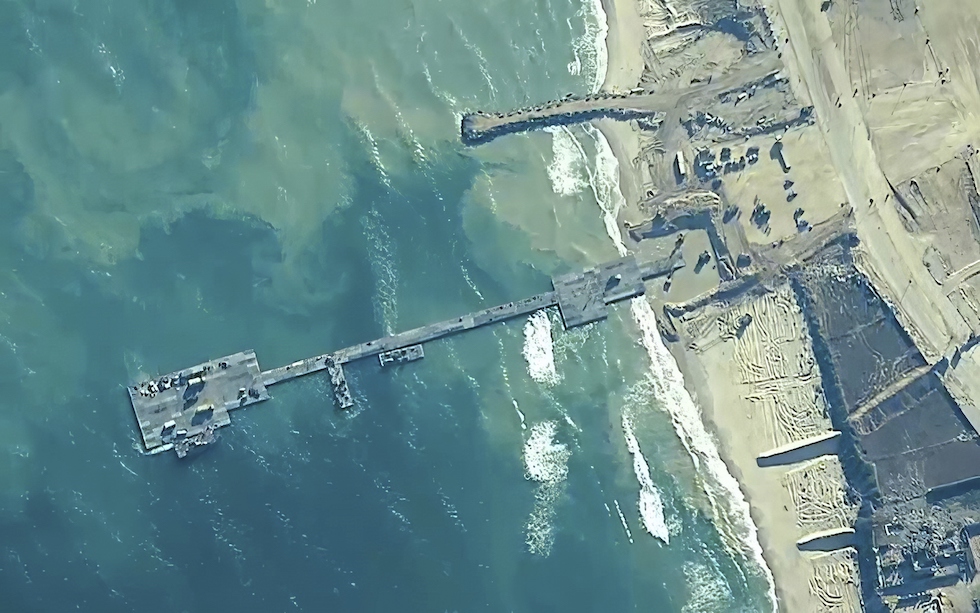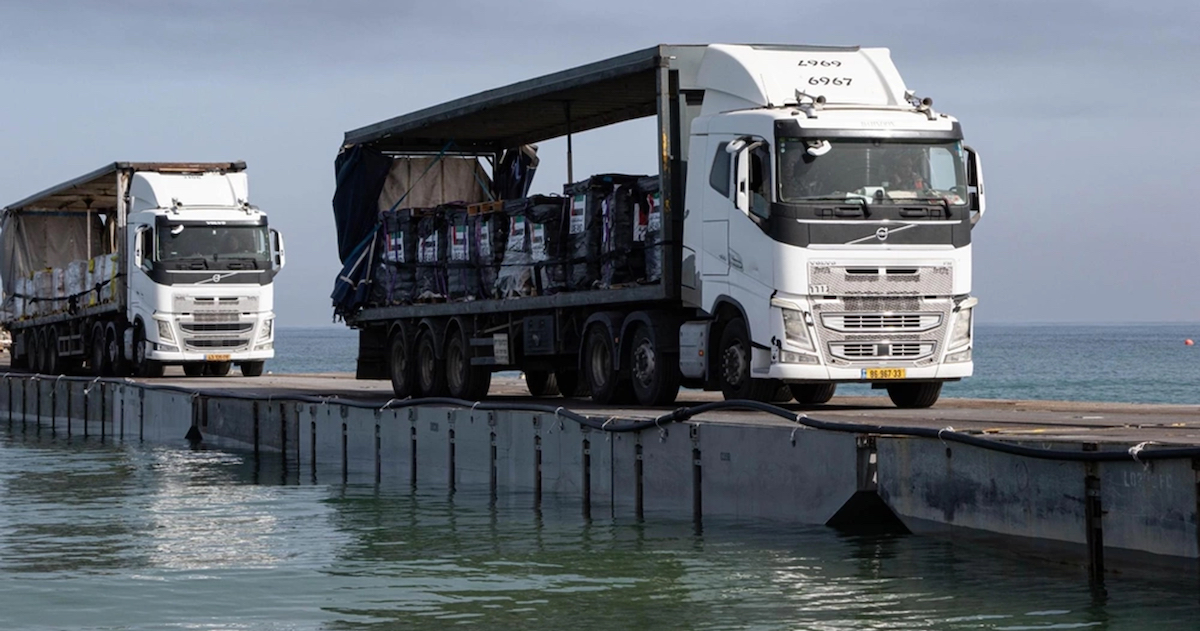US Department of Defense Friday Announce The floating dock built by the US military off the coast of the Gaza Strip to provide aid to the Palestinian population has been removed and may not be rebuilt. The decision to remove the pier, whose construction was completed in mid-May, shows the failure of the Joe Biden administration's project: at a cost of $320 million, the pier has already been dismantled and reassembled several times due to various problems, and the delivery of humanitarian aid to the civilian population has contributed little to Gaza.
The reasons for the failure of the dock are several: first, the technical difficulties of building a floating dock in the open sea, which exposes the structure to the elements; and second, the logistical difficulties of delivering aid to the Palestinian population. Due to the military activities of the Israeli army in the area, only a very few aid trucks were able to reach the UN warehouses for distribution.
The floating dock was announced in March by the Joe Biden administration as a means of alleviating the appalling conditions of the civilian population in the Gaza Strip, which had no access to humanitarian aid in particular at that time: in those weeks there were various testimonies of people and children dying of hunger. Since the announcement, the Biden administration has made it clear that the dock would be an emergency solution, and above all a partial one: it alone would not be able to meet the needs of the Gaza population, but it could contribute to alleviating the situation of hunger at a time when the Israeli army was preventing the passage of aid through the land crossings. When fully operational, just over a quarter of the aid needs of the Gaza Strip were supposed to pass through the dock: this never happened.

Satellite image of the pier in mid-May (U.S. Central Command via AP)
After some delay, construction of the pier was completed in mid-May. It was a very complex infrastructure.
The temporary dock (officially called JLOTS: Joint Logistics Over Shore, which can be translated as “coordinated logistics on the shore”) consisted of two parts: a large floating platform moored off the Strip and the actual dock, which was directly connected to the coast by a long walkway created so that trucks could pass over it. Humanitarian aid arrived from Cyprus via large cargo ships, which moored on the floating offshore platform. The aid was then unloaded on the platform and loaded onto smaller military vessels, which transported it to the dock moored on the coast. From there it was finally loaded onto trucks that took it to the mainland, where it was delivered to the UN World Food Programme mission, which would handle the distribution.
Since the first days of operation, the pier has faced problems and setbacks. Among other things, the delivery of aid to the population was very difficult because in the Gaza Strip all the structures for maintaining order collapsed, and the convoys departing from the coast into the interior of the Strip were systematically attacked by desperate Palestinians.
Just over 10 days after its opening, at the end of May, the pier's activity had already been suspended due to damage caused by bad weather: parts of the pier were dismantled for repair. On June 8, the pier was reopened, but on the same day Israel carried out a violent military operation in the pier area, recovering four Israeli hostages alive, but killing more than 270 Palestinians.
Two warehouses belonging to the World Food Program – the United Nations agency that was responsible for distributing aid – participated in the operation. They were hit by missiles.At that time, the director of the World Food Program announced that the distribution of aid from the dock had stopped, because the safety of its staff could no longer be guaranteed. The United Nations also feared that its neutrality was being compromised, due to the spread of rumors that the US military had made the dock facilities available to support Israel in the military operation (the US military he refused).
Since then, the WFP has never resumed aid deliveries. The US military continued for a while to bring humanitarian aid to the coast via the pier, storing it in protected staging areas. But with no one to distribute it, humanitarian aid is effectively off-limits. On Friday, with the ISIL areas on the coast at their maximum capacity, the military announced the removal of the pier.
In fact, the dock operated fully for about ten days, from mid-May to the end of the month, while in June it was limited to collecting aid at sorting areas on the coast, but it was not delivered. In total, according to the United States, 8,831 tons of aid entered Gaza via the dock, of which about 4,500 tons remain stuck in sorting areas.

“Reader. Travel maven. Student. Passionate tv junkie. Internet ninja. Twitter advocate. Web nerd. Bacon buff.”




